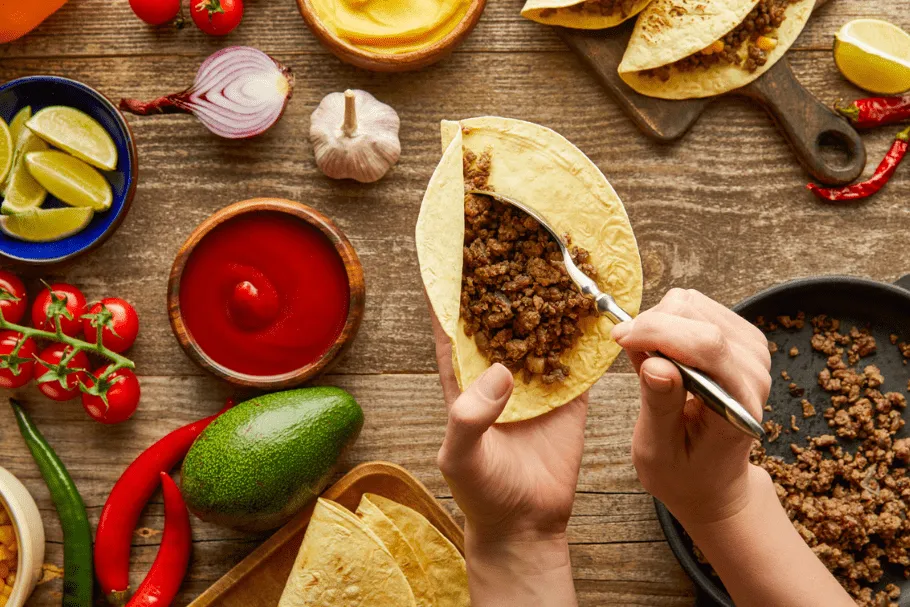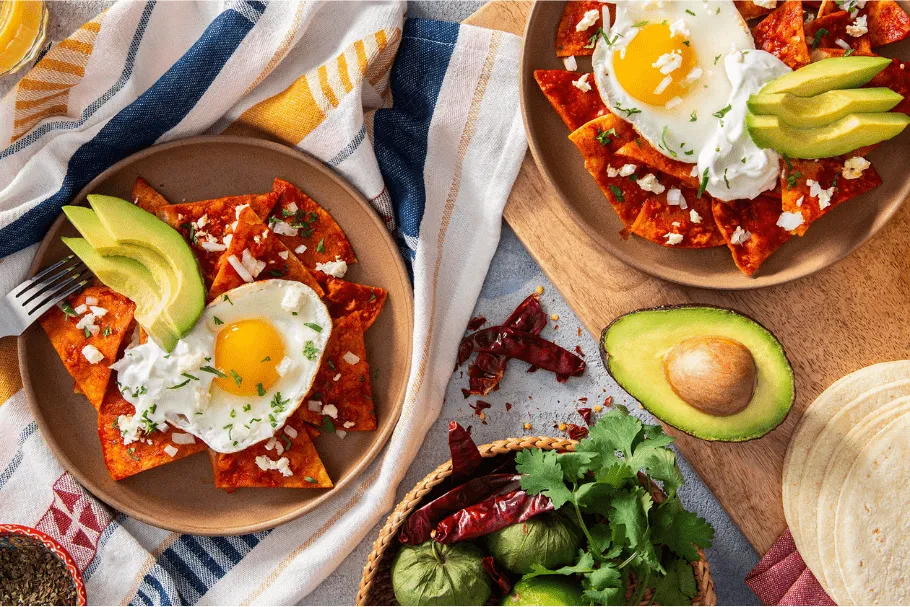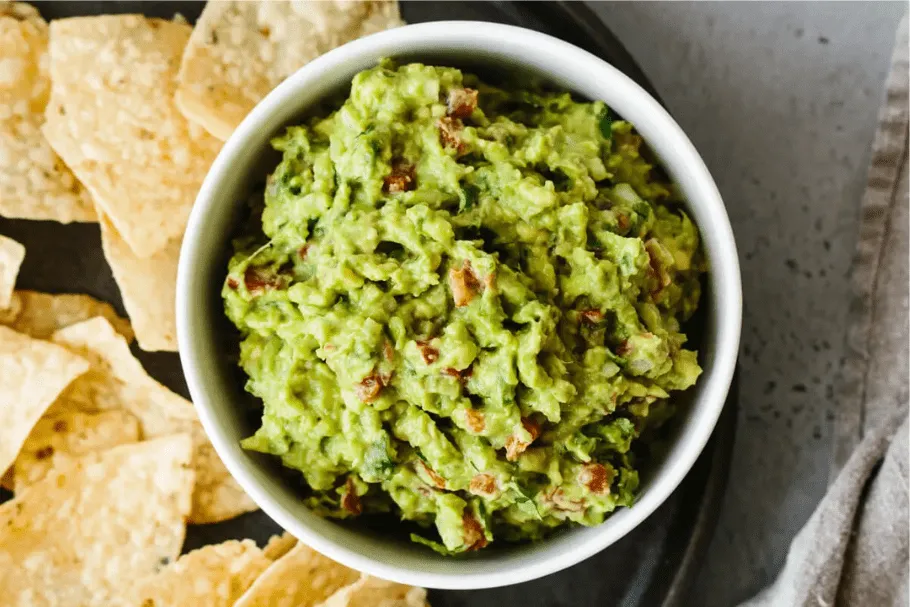Mexico, a land of vibrant colors, lively Mariachi music, and a deeply rooted culture. But perhaps what makes Mexico even more captivating is its cuisine. From bustling streets to ancient villages, Mexican flavors permeate every corner, telling stories of history, culture, and its people. Join “Du lịch khắp thế gian” as we embark on a journey to discover the Mexican Highlands, where food is not just sustenance, but a part of the national soul.
Mexican Cuisine: A Symphony of History and Culture
Mexican cuisine is a vibrant tapestry woven from the intermingling of many cultures. It is a harmonious blend of indigenous Mesoamerican cooking traditions, European influences, and culinary techniques adopted from other civilizations. The foundation of Mexican cuisine lies in ancient civilizations such as the Olmec, Maya, and Aztec, who domesticated corn, invented nixtamalization (treating corn with lime), and developed unique cooking methods.

The Spanish conquest of the Aztec empire brought new ingredients such as livestock, dairy products, rice, sugar, olive oil, and various fruits and vegetables. Spanish influence is evident in sweets like alfajores, alfeniques, borrachitos, and churros. In addition, influences from Asia and Africa, a consequence of the transatlantic slave trade, further enriched Mexico’s culinary identity.
Today, Mexican cuisine is not only an integral part of culture but also a thread connecting communities and preserving traditional values. UNESCO recognized traditional Mexican cuisine as an Intangible Cultural Heritage of Humanity in 2010, a testament to its profound cultural significance.
Exploring Regional Culinary Diversity
Geographical and historical diversity has created distinctive regional cuisines in Mexico. Each region has its own characteristics, from staple crops to special spices, creating flavors that are unmistakable.
Northern Mexico: Land of Beef
Northern Mexico is renowned for its strong cattle ranching tradition, making beef dishes dominant. Grilling is a popular technique, and side dishes like refried pinto beans, rice, and jerky are common in meals. The development of the livestock industry also contributed to the diversity of cheeses. The widespread cultivation of wheat led to the creation of wheat tortillas, and from there, the famous Sonora burrito was born.
Baja California Peninsula: Seafood Paradise
Baja California is famous for its wine and iconic fish tacos. The cuisine here is heavily influenced by the sea, with fresh seafood dishes. In addition, cultural exchange with immigrants from Russia and China has created unique features. Interestingly, the Caesar salad and margarita cocktail are also believed to have originated in this region.

Oaxaca: Land of Mole Sauce
Oaxaca is a region that strongly preserves the culinary traditions of the indigenous Mixtec and Zapotec people. Corn is a staple food, with corn tortillas appearing in every meal, along with black beans and chocolate. In particular, Oaxaca is famous for mole sauce, with seven different types, including negro, amarillo, coloradito, manchamanteles, chichilo, rojo, and verde, each offering a unique flavor.
Chiapas: Flavors Similar to Oaxaca
Chiapas cuisine has many similarities to Oaxaca cuisine. Corn is the main staple, and meats such as beef, pork, and chicken are commonly used. Vegetables are also an important part, especially pumpkin, chayote, and carrots. This region is also famous for its distinctive spicy chili peppers.
Jalisco: Land of Tequila
Jalisco is known as the birthplace of many Mexican cultural icons such as mariachi, charrería (a form of rodeo), and tequila. Jalisco’s cuisine reflects the richness of its natural resources and culture, with over 200 miles of coastline, Mexico’s largest freshwater lakes (such as Lake Chapala), arid vegetation, and snow-capped peaks.

Yucatán Peninsula: A Blend of Many Cultures
The unique geographical location of the Yucatán Peninsula has profoundly influenced its culinary style. Yucatán specialties differ from other regions of Mexico due to the strong culinary traditions of the Maya people, along with influences from the Caribbean, France, and the Middle East. Popular tropical fruits such as tamarind, plum, mamey, avocado, and sour orange, and the distinctive achiote spice, create unique flavors.
Veracruz: Cultural Crossroads on the Gulf Coast of Mexico
Located on the Gulf Coast of Mexico, Veracruz cuisine is influenced by indigenous, Spanish, and Afro-Caribbean cultures. Europeans brought spices, rice, citrus fruits, and pineapples. Olives, olive oil, and capers are also common ingredients brought by settlers from Spanish Mediterranean regions.
Poblano (Mexico City & Puebla): A Diverse Culinary Center
Mexico City, a major urban center, is a melting pot of cultures and culinary styles from across the country and around the world. Street foods like tacos and tortas are very popular. Some restaurants focus on pre-Hispanic cuisine, with dishes using insects as a primary protein source.
Iconic Mexican Dishes
Mexico is home to many iconic dishes famous worldwide. Each dish, with its unique combination of ingredients and techniques, offers a distinctive taste of Mexico’s rich culinary heritage.
Chilaquiles: Traditional Breakfast Dish
Chilaquiles is a popular traditional breakfast dish consisting of lightly fried corn tortillas, cut into pieces and topped with green or red salsa. The dish is often served with scrambled or fried eggs, shredded chicken, cheese, and cream. Chilaquiles are often accompanied by refried black beans.

Pozole: Festive Soup
Pozole is a traditional soup dating back to pre-Hispanic times, originally used in sacrificial rituals. Today, it is a popular dish in Mexican cuisine. This soup is made from hominy corn kernels, simmered with various herbs and spices for hours, even overnight. Lettuce, radishes, onions, lime, and chili peppers are often added before serving.
Tacos Al Pastor: Street Flavor
Tacos al pastor are one of the most popular types of tacos, with thinly sliced pork grilled on a vertical spit, placed on corn tortillas, and served with onions, cilantro, and pineapple. The unique flavor of this dish has captured the hearts of food lovers worldwide.
Tostadas: Crispy Fried Tortillas
Tostadas are crispy fried corn tortillas that can be eaten plain or topped with various ingredients. Popular toppings include refried black beans, cheese, grilled meat, and seafood.
Guacamole: Divine Avocado Dip
Guacamole is a traditional dip originating from Aztec times. Made from mashed avocados, onions, tomatoes, lime juice, and chili peppers, guacamole is often served with tortilla chips or as a side dish. It is one of the most beloved Mexican dishes worldwide.

Tamales: Food of the Nomads
Tamales are a dish dating back to Aztec, Mayan, and Inca times, created as a nutritious food source for nomads. Tamales are corn dough packets filled with sweet or savory fillings, wrapped in banana leaves or corn husks, and then steamed.
Conclusion
The journey to discover the Mexican Highlands is not just a trip to a land of delicious food, but also an adventure into history, culture, and people. Mexican cuisine, with its diversity, richness, and unique flavors, promises to offer you unforgettable culinary experiences. Come and explore, and you will love Mexico more than ever!